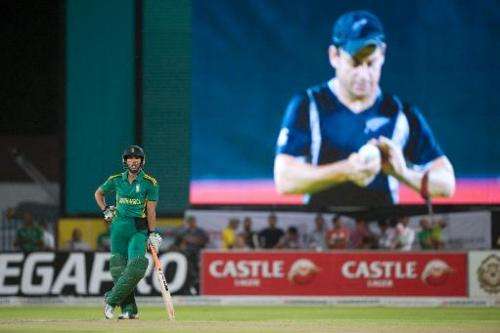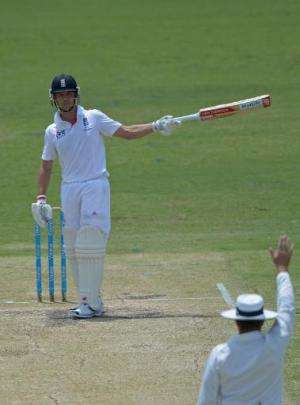Real-time Snicko set for Ashes test

The controversial decision review system has had a last-minute update for the start of the Ashes this week, with a real-time Snickometer set to be added to the technology available to match umpires.
Series' broadcaster Channel Nine has struck a deal with BBG Sports, the company that provides "Hot Spot" and the updated "Snicko" technologies, to use the products from Thursday's first Test between Australia and England, reports said Tuesday.
It clears the way for the International Cricket Council to trial the new technology as part of the decision review system (DRS) following the agreement of Cricket Australia and the England and Wales Cricket Board, the Sydney Morning Herald said.
Channel Nine has been told by the ICC that umpires will be using it, along with Hot Spot, the "Eagle Eye" ball-tracking system and stump microphones, to determine whether batsmen are out.
"Real-time Snicko will be part of the DRS (decision review system). Both teams' boards have agreed to do it," Nine's executive producer of cricket Brad McNamara told the newspaper.
He said the updated technology would add to "add to the viewers' experience and also hopefully help in the decision-making process for umpires".
"It will change the DRS," he added. "Hopefully you won't get the mistakes."

Tensions involving DRS ran high during England's 3-0 home series win this year and Australian captain Michael Clarke wrote in his newly released Ashes diary: "My opinion is that if the technology isn't perfect, it shouldn't be used at all.
"The inventor and owner of Hot Spot (Warren Brennan) came out and admitted it doesn't pick up all nicks. OK, that's fine: Hot Spot should not be used until it is more reliable."
Brennan has said that real-time Snicko, which provides far quicker audio of suspected edges than its predecessor, would help overcome the shortcomings of Hot Spot, which uses thermal imaging.
The real-time Snicko has been referred for independent testing by the ICC but it is unclear how much training the Ashes umpires have done with the new device, the Herald said.
Channel Nine voiced confidence in the technology.
"None of this stuff or the ball-tracking was built to be a decision-making option for the umpires," McNamara said.
"It was always meant as a technology tool. But if they are using it, we hope that the real-time Snicko avoids the situation that we had in England. It will help the umpires."
The other major change to the DRS for the Ashes will be the introduction of extra reviews.
The number of reviews will be "topped-up" to two after 80 overs of a Test innings. Previously, teams were only permitted a maximum of two unsuccessful reviews per innings.
© 2013 AFP

















